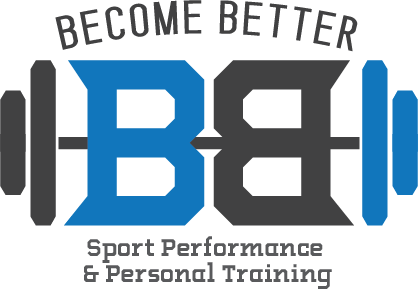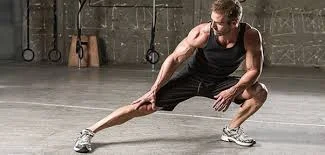Do You Know How to Properly Warm Up in the Gym?
Recently, we have been asked by many of our clients, “What is the proper way to warm up?” There are two main components of a warm-up that we will discuss in this article. The first component is about warming up is the general warm-up, which serves to just get you moving and feeling loose before you start lifting. The second component is the specific warm-up, which will include how to progress warm up sets when you are benching, squatting, deadlifting, etc…
The first component of warming up is the general warm-up. We love to see how excited everyone is to get right after the weights, but it is just as important to warm up your soft tissue before weights are involved. During this portion of the warm-up, you should focus on general movements that get you feeling loose and ready to move. Examples include dynamic stretching, foam rolling, and/or light cardio such as 5 minutes on the bike, treadmill, or rower. You do not need to go through an extensive 30 minute stretching session before you begin training, but taking 5-10 minutes to work on general movement prep can be beneficial.
Here are a couple examples of a 5-10 minute general warm-up that you can use before your next training session:
Lower Body General Warm-up:
5 minutes cardio of choice
Foam roll calves, hamstrings, quads, adductors, IT bands, and glutes for 15-20 seconds each
Body weight squats x10-15
Knee huggers x5 each
Butt kicks x5 each
Lunge w/ twist x5 each
Walking single leg toe touch x5 each
Upper Body General Warm-up:
5 minutes cardio of choice
Foam roll lats, triceps, biceps, pecs, and shoulders for 15-20 seconds each
Arm circles x10 forward and backwards
Wall shoulder slides x10-15
Push-up x10
Band pull-aparts x15-20
The next and most important component of a warm-up is the specific warm-up. If you are pressed for time and don’t have 5-10 extra minutes to perform a general warm-up, you should at least be performing a specific warm-up. A specific warm-up is going to include the specific movements that you are going to be doing for your workout that day. If you’re squatting, then you need to warm up to your working weights by squatting lighter weights. If you’re bench pressing, you need warm up to your working weights by benching lighter weights. If your workout includes max effort jumping, you should warm up with a few sets of lower intensity jumps. This holds true for any exercise. Jumping straight to your working weights without any warm-up sets is not the best idea. Think of your lighter warm-up sets as extra opportunities to dial in your technique and grease the groove for your heavier sets.
Now, we are not saying that you need to take 15-20 minutes or more just to warm up to your working weights (yes, we have seen some of you do this!). Warm-up sets should require minimal or no rest in between since they are very submaximal. Take reasonably sized jumps up to your top working weights in even(ish) increments and plan for about 3-6 warm-up sets. How many sets you take is personal preference, but in general the heavier the absolute weight that you’re lifting, the more warm-up sets you’ll need to take. As another general rule of thumb, your first warm-up set should always be with the empty bar (or bodyweight) and your last warm-up set should be with about 90% of your first working set. Using those two landmarks as guidelines, plan out your 3-6 warm-up sets and try to make the jumps between sets into even increments. Another consideration for less mental plate math during your warm up to heavier absolute working weights is to just make jumps by 45lb and 25lb plates. For example, if you’re working up to a bench press working weight at 225lbs, you may take the empty bar for a few reps, 95lbs for a few reps, 135lbs for a few reps, 185lbs for a few reps, then put on your working weight.
Here are two examples of specific warm-ups for the back squat exercise for working up to a lower absolute working weight and a higher absolute working weight.
Specific Warm-up to Working Sets of 135lbs x5 reps
Bodyweight squats x10
Empty bar x5
85lbs x5
105lbs x3
120lbs x1
Work sets
Specific Warm-up to Working Sets of 315lbs x5 reps
Empty bar x5
135lbs x5
185lbs x3
225lbs x2
275lbs x1
Work sets
Remember to include both general and specific movements in your warm-up when possible. They both serve their own purposes and can help you get more out of your workout. Your warm-ups shouldn’t require a whole bunch of extra time, but they shouldn’t be rushed either. With your general and specific warm-ups combined, you should be able to get to your first work set within 10-15 minutes of arriving at the gym. Let us know if you have any questions!

